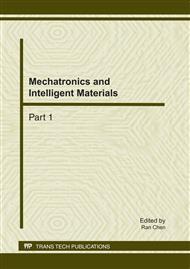p.395
p.400
p.406
p.411
p.416
p.421
p.425
p.430
p.434
To Study the Effect of the Magnetic Field’s Alternative Direction in the Magnetic-Electrochemical Compound Polishing
Abstract:
In magnetic-electrochemical compound polishing, adding a magnetic field whose direction is parrallel to the electrical field’s directions and is charged alternatively, the velocity of changed particles cannot be accelerated obviously and the efficiency of chemical reaction cannot be promoted consequently, but the chemical reaction is well-distributed and the effect of the polishing is improved. In the paper, the velocity equation and loci equation of the charged particle in electromagnetic feild is concluded and analysed in magnetic-electrochemical compoud poshing in which an alternative direction’s magentic field is added. To be compared the charged particles in alternative direction’s magnetic field with the charged particles in static magnetic field carefully, the conclusion above is obtained. Moreover, a magnetic-electrochemical compound polishing head which can change the magnetic field’s direction easily is developed. At last, the conclusion is tested.
Info:
Periodical:
Pages:
416-420
Citation:
Online since:
February 2011
Authors:
Price:
Сopyright:
© 2011 Trans Tech Publications Ltd. All Rights Reserved
Share:
Citation:


